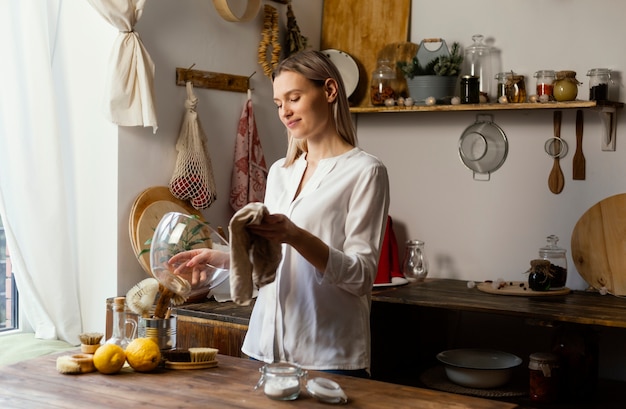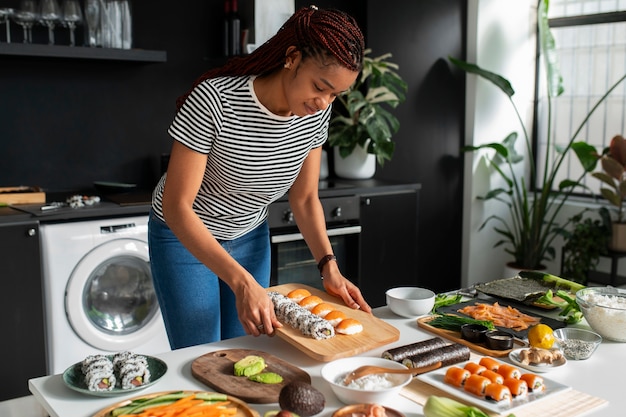Let's talk about keish. You know, that heavenly dish that’s a comforting hug in a crust? I’ve been making keish for years and learned that achieving the perfect bake is an art – a blend of technique and intuition. It’s not just about tossing ingredients in a dish and hoping for the best; it’s about understanding the science behind the bake and knowing when your keish is ready to shine.
Today, we're diving into the world of keish cooking times, uncovering the secrets to achieving that irresistible golden crust, a fluffy and flavorful filling, and a keish that's cooked through and through. We'll navigate the factors influencing cooking times and explore tips and tricks to make your keish the star of any table.
(Part 1) The Foundations of Keish Baking: A Culinary Symphony

Before we delve into the complexities of cooking times, let’s lay the groundwork. Keish baking is a symphony of ingredients and techniques, each playing a crucial role in creating a harmonious masterpiece.
1. The Crust: The Star of the Show
The crust is the foundation of any good keish. It's the sturdy, flavorful base that holds everything together and provides that satisfying crunch. I've experimented with countless crust recipes, from simple buttery ones to more elaborate creations with cheese or herbs. But one thing remains constant: the texture. You want a crust that's golden brown, flaky, and holds its shape without being too tough. A good crust complements the filling, not overpowers it.
2. The Filling: A culinary adventure
The filling is your playground, where you can unleash your creativity. Keish is a blank canvas for endless flavour combinations. Whether you're drawn to the classic cheese and spinach duo, a bolder mushroom and chorizo medley, or a more whimsical medley of vegetables and herbs, the possibilities are limitless. Remember, the key is to ensure the filling is cooked through and evenly distributed within the crust, creating a harmonious balance of flavors and textures.
(Part 2) The Variables of Keish Cooking: Understanding the Factors

Now, let’s unpack the key factors influencing keish cooking times. These variables create a unique dance, and your ability to read the cues will help you achieve a perfect bake.
1. The Dish: Size Matters
The size and depth of your dish play a significant role in determining the cooking time. A larger dish means a longer baking time as the heat needs to penetrate a greater volume. Similarly, a deeper dish will require more time than a shallower one. It's essential to consider the size of your dish when planning your cooking time.
2. The Crust: Thick or Thin?
The thickness of your crust also influences cooking time. A thicker crust, whether homemade or store-bought, will take longer to cook through than a thinner one. If you're using a pre-made crust, pay attention to the recommended cooking times, but be prepared to adjust based on your filling's needs.
3. The Filling: A Balancing Act
The amount and type of filling significantly impact baking time. A densely packed filling requires longer to cook through than a lighter one. Meatier fillings, like those with sausage or bacon, will also need a bit more time in the oven compared to a filling dominated by vegetables or cheese.
4. Oven Temperature: Consistency is Key
Oven temperatures can vary from model to model. Always double-check your oven's temperature with an oven thermometer to ensure consistency. A higher temperature will lead to a faster cooking time, but be careful not to overcook the crust or scorch the filling.
(Part 3) Decoding the Cues: Knowing When Your Keish is Ready

The real magic happens when you learn to recognize the signs that your keish is done. It's not just about following a recipe; it's about understanding the visual cues and trusting your intuition.
1. The Golden Crust: A Sign of Perfection
The golden brown crust is the ultimate signal. It indicates that the crust is cooked through and has achieved that delightful crispness. But don't go for overly dark brown, as it can signify burning. Aim for that beautiful golden hue, a testament to a perfectly baked crust.
2. A Set Filling: A Symphony of Textures
The filling should be set, no longer runny, indicating the eggs are cooked and the other ingredients have reached their peak temperature. If you've included cheese in your filling, you'll want to see it melted and bubbly, contributing to the richness of the dish.
3. The Jiggle Test: A Gentle Wobble
This classic test involves gently shaking the dish. If the filling wobbles slightly in the center but doesn't jiggle like a liquid, it's ready. This gentle wobble tells you the filling is cooked through but still retains a touch of softness.
4. The Knife Test: A Clean Cut
Insert a clean knife into the center of the keish. If it comes out clean, you're in business. If there's raw egg clinging to the knife, it needs a few more minutes in the oven. This test ensures that the eggs are fully cooked and the filling is uniformly heated.
(Part 4) Keish Cooking Times: General Guidelines for Success
Let's dive into the heart of the matter - the actual cooking times. Remember, these are general guidelines; you might need to adjust based on your specific recipe, filling, and oven.
Small Keishes (6-8 inch diameter)
Simple fillings (cheese and spinach, mushrooms and onions): 25-30 minutes at 350°F (175°C)
Meatier fillings (sausage, bacon, chicken): 30-35 minutes at 350°F (175°C)
Large amounts of cheese: 35-40 minutes at 350°F (175°C)
Medium Keishes (9-11 inch diameter)
Simple fillings: 35-40 minutes at 350°F (175°C)
Meatier fillings: 40-45 minutes at 350°F (175°C)
Large amounts of cheese: 45-50 minutes at 350°F (175°C)
Large Keishes (12 inch diameter)
Simple fillings: 45-50 minutes at 350°F (175°C)
Meatier fillings: 50-55 minutes at 350°F (175°C)
Large amounts of cheese: 55-60 minutes at 350°F (175°C)
(Part 5) Tweaking Your Bake: Adjusting for Perfection
Every keish has its own personality, and you might need to adjust the cooking times based on specific circumstances. Here are a few tips to refine your baking technique.
1. The Power of Foil: Protecting the Crust
Sometimes, covering your keish with foil during the first part of baking is beneficial, particularly when dealing with a thick crust or a filling that requires longer cooking. The foil prevents the crust from browning too quickly while allowing the filling to cook evenly. Remove the foil for the last 10-15 minutes to allow the crust to brown properly and achieve that beautiful golden hue.
2. The Baking Stone: Evenly Distributed Heat
A baking stone is a valuable tool for keish baking. It helps distribute heat evenly, resulting in a crispier crust. If you're using a baking stone, you might need to reduce your cooking time slightly, but keep a close eye on it to prevent overcooking.
3. Pre-baking the Crust: Preventing Sogginess
If you're using a pre-made crust, pre-baking it for a few minutes before adding the filling can help ensure it's cooked through and prevents it from becoming soggy. This is particularly helpful with store-bought crusts that can sometimes be a bit softer.
(Part 6) My Keish Journey: Lessons Learned and Favorite Recipes
Now, let's take a break from the technical side and explore my personal keish journey. Through years of baking, I've developed a deep appreciation for this versatile dish and a collection of tricks and favorite recipes.
Learning from Experience: A Culinary Evolution
I started with basic recipes, the ones that grace every cookbook, with cheese and spinach, or mushrooms and bacon. As I became more confident, I experimented with different flavour combinations, discovering the endless possibilities keish offered. Keish is a canvas for creativity; you can add almost anything you like, from vegetables and meats to fruits and nuts. It’s a culinary adventure!
The Importance of Intuition: Listening to Your Senses
Over time, I learned to trust my intuition, that innate sense that whispers when something is ready. It's not just about following the recipe; it's about understanding the signs, recognizing the cues, and knowing when to adjust the cooking time.
My Favorite Keish Recipe: A Symphony of Flavors
I'm a fan of the classic cheese and vegetable filling. I enjoy a blend of Gruyère, Parmesan, and cheddar for a rich and complex flavor. For the vegetables, I use a combination of spinach, mushrooms, and leeks, adding a touch of garlic and fresh herbs for that extra flavor boost. It's simple, satisfying, and always a crowd-pleaser.
(Part 7) Beyond the Basic: Exploring Creative Variations
Keish is not limited to savory dishes. It’s a culinary chameleon, capable of adapting to sweet and savory cravings.
1. Sweet Keish: A Culinary Surprise
Who says keish has to be savory? You can create stunning sweet keish by incorporating fruits and spices. Imagine a beautiful apple and cinnamon keish or a decadent cherry and almond keish, perfect for a special occasion.
2. Keish Quiche: A Hearty Delight
If you're looking for something more substantial, you can transform your keish into a quiche by simply adding eggs and cream to your filling. Bake it until set, and you'll have a hearty dish that’s both visually appealing and satisfying. You can experiment with classic bacon and cheese or more adventurous options like goat cheese and roasted vegetables.
3. Keish with a Twist: Embracing Creativity
Don't be afraid to get creative with your keish. Try different crusts like puff pastry or filo dough for a different texture and visual appeal. Incorporate nuts, seeds, or dried fruits for added texture and flavor. Keish is an invitation to explore and find what suits your taste.
(Part 8) FAQs: Navigating the World of Keish Cooking
Here are answers to some of the most common questions about keish cooking times:
1. What if my Keish is Overcooked?
An overcooked keish might have a hard crust and a dry filling. Unfortunately, there’s not much you can do to fix it. You can try to soften the crust by adding a bit of butter or oil.
2. Can I Freeze Keish?
Yes! You can freeze keish for up to 3 months. Wrap it tightly in plastic wrap or foil and freeze. When you're ready to eat it, thaw it in the refrigerator overnight and then reheat it in a preheated oven at 350°F (175°C) for about 15-20 minutes.
3. How Long Can I Keep Leftover Keish?
Leftover keish can be kept in the refrigerator for up to 3-4 days. Store it in an airtight container to maintain freshness.
4. What Happens If I Don't Cook the Keish Long Enough?
If your keish is undercooked, the filling won't be set, and the eggs might still be runny. You can always put it back in the oven for a few more minutes, but keep a close eye on it to prevent overcooking.
5. What if My Crust is Soggy?
A soggy crust is usually a sign of underbaking or a filling that released too much moisture. You can try to crisp it up by broiling it for a few minutes. Alternatively, you can use a pre-baked crust to prevent this issue.
(Part 9) Final Thoughts: Embracing the Keish Journey
As I've learned, keish cooking is a journey, a process of exploration and discovery. It's about trying new flavour combinations, mastering techniques, and trusting your intuition. It’s about finding what works best for you and creating something truly special. So, don't be afraid to get creative, embrace the process, and most importantly, have fun! You'll discover that the joy of baking a perfect keish lies in the journey itself.
Everyone is watching

Prime Rib Roast Cooking Time Chart: Per Pound Guide
Cooking TipsPrime rib roast. Just the name conjures images of lavish dinners, crackling fires, and hearty laughter. It’s ...

How Long to Bake Potatoes in the Oven (Perfect Every Time)
Cooking TipsBaked potatoes are a staple in my kitchen. They're incredibly versatile, delicious, and surprisingly easy to m...

Perfect Rice Every Time: The Ultimate Guide to Cooking Rice
Cooking TipsAs a self-proclaimed foodie, I've always been a bit obsessed with rice. It's the foundation of countless cuisi...

The Ultimate Guide to Cooking Asparagus: Tips, Techniques, and Recipes
Cooking TipsAsparagus. The mere mention of this spring delicacy conjures up images of vibrant green spears, crisp and burs...

Ultimate Guide to Cooking the Perfect Thanksgiving Turkey
Cooking TipsThanksgiving. Just the word conjures up images of overflowing tables laden with delicious food, the scent of r...
